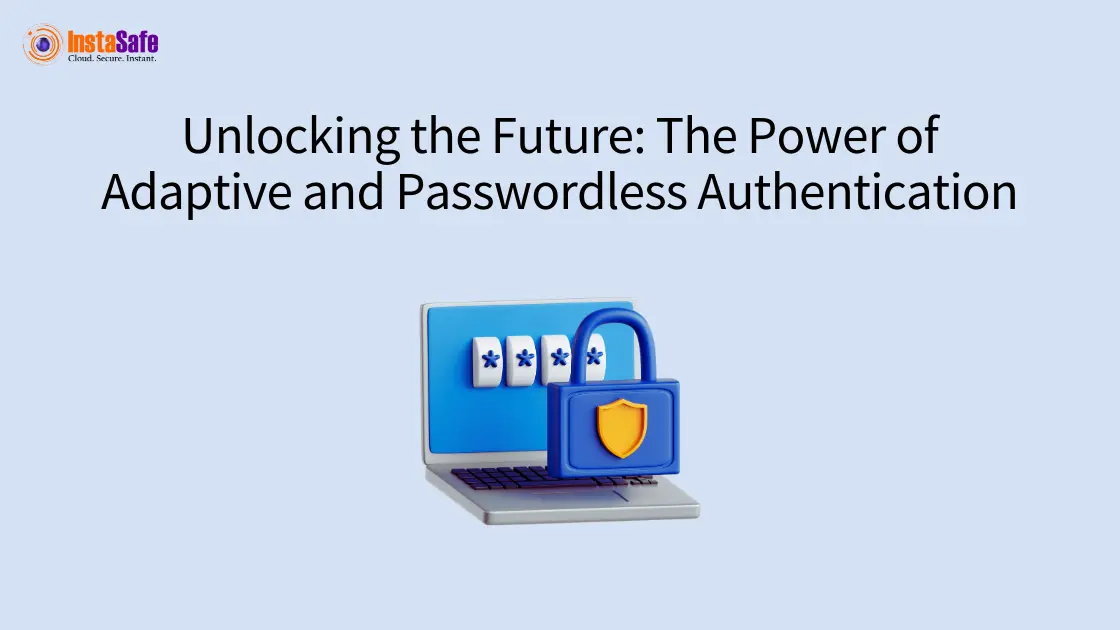Unlocking the Future: The Power of Adaptive and Passwordless Authentication

Passwords have become the weakest link in our digital security chain. They are difficult to remember, easy to compromise and a prime target for cybercriminals. Moreover, password resets make up a major portion of helpdesk calls, leading to additional costs.
Switching to passwordless authentication reduces these expenses, streamlines processes and boosts both security and user convenience.
What Is Passwordless Authentication?
Passwordless authentication is a verification process that allows users to access services and applications without traditional passwords. Instead of relying on something you know (a password), it uses more secure alternatives like:
- Something you are (biometrics)
- Something you have (possession factors)
- Something you do (behavioural patterns)
This method greatly lowers the risk of credential theft, phishing attacks and other online dangers that involve the use of weak passwords.
Common Passwordless Authentication Examples
Biometric Verification
Fingerprints, facial recognition and retina scans provide unique biological identifiers that are extremely difficult to replicate. These inherence factors offer both security and convenience – it is much easier to scan your finger than remember a complex password.
Possession Factors
These rely on something the user physically possesses:
- Mobile device notifications
- Hardware security keys
- One-time passcodes (OTPs) via SMS or email
- Authenticator apps generating temporary codes
Magic Links
When users need to log in, they enter their email address. The system sends an email with a special link containing a unique token. Clicking the link verifies their identity and grants access – no password is required.
FIDO2 Passkeys
Developed by the Fast Identity Online (FIDO) Alliance, passkeys represent the latest advancement in passwordless authentication solutions.
They use public-private key cryptography, where the private key never leaves the user's device, making them resistant to phishing attacks. Major companies like Apple, Google and Microsoft have embraced this technology.
Top Benefits of Passwordless Authentication
Enhanced Security
By eliminating passwords, you remove the primary target of cybercriminals. Traditional password-based attacks like phishing, credential stuffing, brute force and password spraying become ineffective against passwordless authentication solutions.
Improved User Experience
Passwordless methods create frictionless access experiences. Users no longer need to create, remember or reset complex passwords. This streamlined approach leads to:
- Faster logins
- Reduced account lockouts
- Fewer abandoned transactions
- Higher user satisfaction
Reduced IT Costs
Password management creates significant business expenses through:
- Helpdesk support for password resets
- Infrastructure for password policies
- Time spent on account recoveries
- Resources for password security
Passwordless authentication eliminates these costs, allowing IT teams to focus on more strategic initiatives.
Enhanced Compliance
Modern data protection regulations like GDPR and CCPA require strong security measures. Passwordless authentication helps organisations meet these requirements by:
- Reducing unauthorised access risks
- Minimising stored personal data
- Providing detailed audit trails
- Demonstrating proactive security approaches
Future-Proofing Security
As security threats change, organisations can adapt and react with passwordless identification. Modern technologies, like AI and ML, can help companies stay ahead of new security threats.
Understanding Adaptive Authentication
While passwordless authentication provides excellent security benefits, combining it with adaptive authentication creates an even more robust security framework.
Adaptive authentication (also called risk-based authentication) uses AI to analyse user behaviour patterns and context. The system evaluates multiple risk signals during each authentication attempt, including:
- Device information
- Location data
- Time of login
- Network details
- Typing patterns
- Transaction types
- Previous behaviour
Based on these factors, the system calculates a risk score and adjusts the authentication requirements accordingly.
How Adaptive and Passwordless Authentication Work Together?
Consider this scenario:
- A user typically logs in from their office laptop in New York every weekday morning.
- The system establishes this as normal behaviour over time.
- One day, the same user attempts to log in from an unknown device in a different country.
- The adaptive authentication system detects this anomaly and assigns a high-risk score.
- Instead of denying access outright, it requires additional verification through a passwordless authentication method, such as a push notification to the registered mobile device.
- If the legitimate user approves this request, access is granted; if not, the system blocks the attempt.
This layered approach provides powerful security without compromising user experience. Low-risk activities proceed smoothly, while potentially suspicious activities trigger appropriate safeguards.
Implementing Adaptive and Passwordless Authentication
Start with a Strategic Assessment
Evaluate your current authentication infrastructure, identify vulnerable areas and determine which passwordless authentication solutions align with your organisation's needs and user preferences.
Choose the Right Methods
Select passwordless authentication methods that make sense for your environment:
- Consumer-facing applications might benefit from biometrics and magic links.
- Enterprise environments might prefer security keys and authenticator apps.
- Healthcare settings might require a combination of methods based on sensitivity.
Implement Gradually
Start with a pilot program for non-critical systems before expanding to more sensitive resources. This approach allows for user education and feedback collection.
Integrate Adaptive Authentication
Layer adaptive and passwordless authentication capabilities to create a dynamic security posture that responds to changing risk levels.
Monitor and Optimise
Continuously analyse authentication patterns, adjust risk models and refine your approach based on emerging threats and user feedback.
Conclusion
The movement toward adaptive and passwordless authentication represents more than a trend – it is the future of digital identity verification. As organisations recognise the security vulnerabilities and operational costs associated with passwords, the adoption of these technologies continues to accelerate.
With InstaSafe's multi-factor authentication, users enjoy easier logins through biometrics or mobile verification while blocking hackers. Our adaptive system analyses behaviour patterns in real time, adjusting security levels automatically. With InstaSafe, you are choosing the future of authentication — making security both stronger and simpler.
Frequently Asked Questions (FAQs)
- What are the disadvantages of password-based authentication?
Passwords can be forgotten, stolen, phished or brute-forced. They are often reused across sites, creating vulnerability chains. Users create weak passwords for memorability, and password management is burdensome.
- What is the difference between passwordless authentication and multi-factor authentication?
Passwordless authentication eliminates passwords entirely, using biometrics, tokens or magic links. Multi-factor authentication combines multiple verification methods (passwords, biometrics, tokens) for layered security, which may include passwordless elements.
- Can Passwordless Accounts Be Hacked?
Yes, passwordless authentication solutions can be compromised through device theft, spoofed biometrics, hijacked email/SMS or social engineering. However, adaptive and passwordless authentication typically offers stronger protection than passwords alone.
